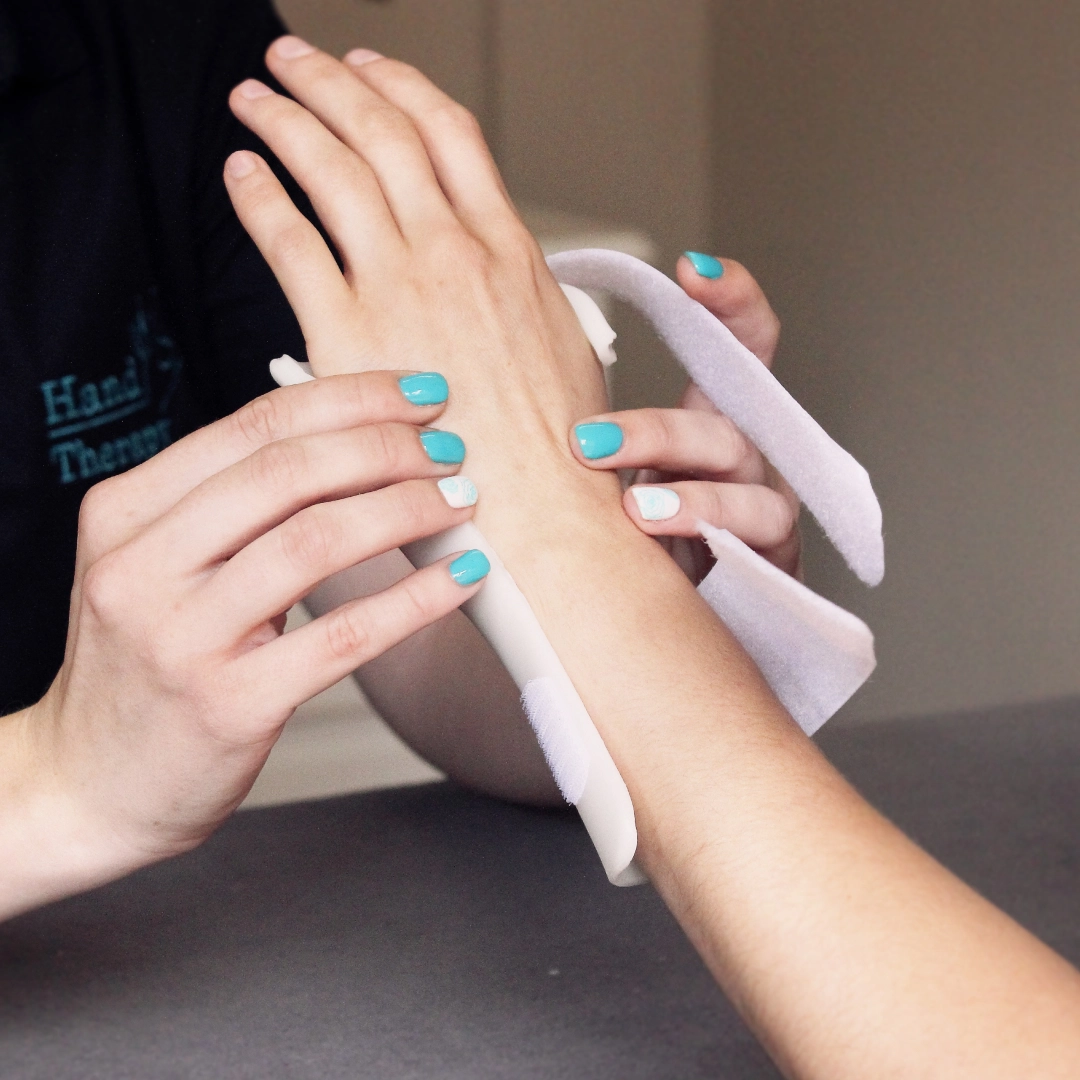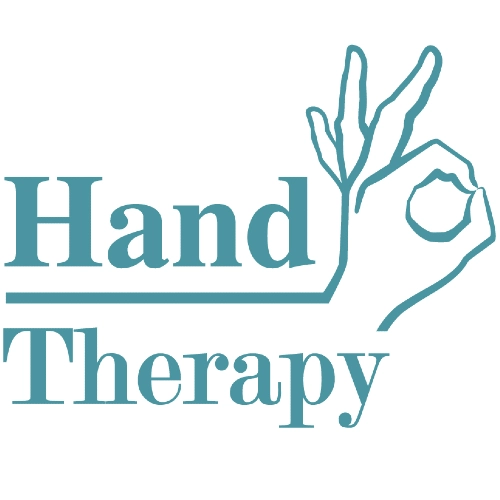Carpal tunnel involves compression on the median nerve in your wrist. Compression on the median nerve causes pins and needles in the thumb, index finger and middle finger. Carpal tunnel syndrome is widely misunderstood and there are thousands of treatments and gadgets that claim to relieve the pain. Understanding what causes the pain will make you think for yourself.

What is the Carpal Tunnel made up of?
The carpal tunnel is a narrow passageway in your wrist about 2.5 cm wide. The floor and sides of the tunnel consist of eight small wrist bones called the carpal bones. Furthermore the roof of the tunnel is a strong band of connective tissue called the transverse carpal ligament. As the boundaries are very rigid it therefore has little capacity to stretch or increase in size.
Within this tunnel there is a group of tendons as well as a nerve called the median nerve. They run from the forearm to the wrist. Think of these tendons and the nerve inside the tunnel as a group of cables inside a pipe. When one of these cables becomes swollen it can put pressure on the nerve resulting in nerve pain.
Diagnosis of Carpal Tunnel Syndrome
How we test it:
We are experienced in testing the different types of problems that can cause your wrist pain. Our specialists use a variety of nerve gliding and neural tissue mobilisation to determine the extent of the damage on the median nerve. We mainly test two components of the nerve, the first involves feeling and the second is your ability to control the small movements in your fingers.
Why is my nerve pain not going away?
First signs
A tingling sensation in the fingers, pins and needles, will progressively get worse until the fingers feel numb or dead. At first the feeling of tingling and pins & needles will come and go, only to progress to a constant feeling of burning and numbness as the pressure increases on the median nerve.
The Sensations often appear while holding an object like a cell phone or steering wheel. Generally it starts at the wrist and progressively moves up towards your elbow. In most cases it develops slowly and the symptoms will start off being worse at night or early in the morning.
Progression of Compression
The end results of an untreated median nerve irritation and compression will cause you to experience weakness when trying to grip or hold an object. A very clear sign of long term median nerve compression we see the muscles wasting away at the base of the thumb. You will be unable to lift your thumb and grip a mug of coffee or accidentally let things drop out of your hand.
The compression on the median nerve prevents feedback signals to your brain which causes clumsiness and weakness, which will make you feel like you have lost power in your fingers especially your thumb. Weakness and atrophy of the thumb muscles is a very clear sign of median nerve compression.
Don’t
Must Do
Makes it worse
A big problem we see with Carpal Tunnel Syndrome these days:
Surgery
After a patient has had surgery, there is scar tissue formation on the wound that forms into a scar. Scar tissue is a dense tissue that looks like a spider web. It helps to close a wound very well, but in some cases, it can restrict the normal slide of the nerve. Seeing a therapist is very important to ensure that scar tissue is guided to prevent any restriction on the median nerve tissue.
Wait too long
When you wait too long before getting treatment, the nerve damage can progress too far, making it very difficult to regain full use of the hand. Research has shown that if moderate symptoms occur for longer than 6 months the effects of conservative treatment is poor. If your pain does not relieve in 2 weeks you might want to consider asking our advice.
Braces can make it worse
There is a wide variety of generic braces, sleeves and splints on the market. The problem we see with these braces are that they most often do not fit well and can end up causing more pressure on the median nerve. Make sure you know what you are dealing with before you go buy something that can make it worse.
Be careful what you buy
Generic products sold to help the position of the hand, an example is an ergonomic mouse pad. These products can increases pressure on the Carpal Tunnel and therefore increase the pressure on the nerves running in your wrist. Rather ask for advice before you buy certain products.
Treatment of Carpal Tunnel Syndrome
During a physical examination we will check the feeling and muscle strength of your fingers, hand, wrist, elbow and all the way to your neck. We will also perform special techniques and tests to assess the median nerve. In some cases we may refer you to a neurologist for specialized nerve conduction tests.
- Splinting – We protect the median nerve by offloading the pressure from the median nerve using a custom splint. The splint is made on the hand and will fit perfectly.
- Exercises – We focus on getting the muscles stronger by guiding your through a gradual progression as you get stronger.
- Nerve Gliding – Getting the nerve free from the obstruction and the restoring its normal slide through the carpal tunnel.
- Sensory retraining – To restore the normal feeling in your fingers.
- Oedema management – Reduce swelling in and around the wrist.
- Ergonomics – Changing or adapting activities, tasks or the environment to reduce the pressure on the Carpal Tunnel.
- Carpal bone manipulations
- Median nerve tissue mobilization
- Range of movement exercises of the wrist and hand
- Ultrasound and electromagnetic field therapy
Splinting and wrist brace
A brace can help because it keeps your wrist in a straight, neutral position. You may find that it will help to wear a brace during the day especially during activities that flare up your pain. It will prevent you to put excessive strain on your wrist and avoid repetitive movements. Sleeping with your wrist brace will be very helpful as we bend our wrists when we sleep. This can also put pressure on the median nerve, it must be prevented at all cost.
Healing & Recovery Time
In most cases carpal tunnel syndrome react very fast when caught early and we can expect a full recovery within 4 to 6 weeks. The recovery time is directly linked with the onset time of the symptoms. The longer the symptoms occur without treatment the longer the recovery time will be. In my professional opinion nerves heal very slowly.
We recommend that we see you twice a week for the first two weeks, thereafter depending on your progress we will follow up once a week for usually 4 weeks.
If left untreated you will lose the ability to use your hand.
Medical management
Doctors tend to inject corticosteroids. When used with therapy we see much quicker results.
Some GP’s only prescribe anti-inflammatories only to reduce the swelling and pain. The improvements only last a while.

Surgery of Carpal Tunnel Syndrome
Surgical intervention must be left for a last resort if your symptoms failed to respond to conservative treatment. Surgical treatment aim to decompress the median nerve using 2 surgical techniques:
Open carpal tunnel release (OCTR)
They first cuts open the skin over your wrist and makes an incision through the transverse carpal ligament to release the pressure inside the carpal tunnel and allow room for the structures in the carpal tunnel to expand outside the confines of the tunnel. This allows the pressure to be taken off the median nerve.
Endoscopic carpal tunnel release (ECTR)
This type of surgery is less invasive, but requires precision. The surgeon uses a camera to see what is happening on the inside. He also makes an incision through the transverse carpal ligament to allow expansion of the tissue inside the carpal tunnel.
Both surgical methods’ risks of complications to nerves, blood vessels and tendons are very low.
Dynamic carpal tunnel syndrome:
It is usually caused by excessive manual work repetitive extension and flexion movements of the wrist combined with bending of the fingers and turning the forearm inwards. During this specific motion the pressure in the carpal tunnel increases.
Compression of the median nerve in the carpal tunnel can be caused by an over use of the muscles of the flexor digitorum & superficialis, Flexor pollicis longus. Injury or inflammation to these tendons.
- Flexor digitorum superficialis: Bends the first and second knuckle (digit) of the 2nd to 5th finger. Also closes the hand, and bends the Wrist forward
- Flexor digitorum profundus: Bends the last knuckle or digit of the 2nd to 5th finger. Also closes the hand, and bends the Wrist forward.
- Flexor pollicis longus: Bends the last knuckle of the thumb
Differential diagnosis (conditions that it could also be)
These are conditions present with similar pains to carpal tunnel syndrome but the cause may be a totally different structure.
- Nerve pains from any other nerve (Ulnar or Radial Nerve)
- Pinching of the median nerve between the digits in the palm of your hand
- Pinching of the median nerve at the elbow
- Cervicobrachial syndrome as a result of a pinched nerve roots in the neck
C7-C8 Radiculopathy (this is compression on the C7 cervical nerve root usually due to a hernia of a disc in the neck) - Intracranial neoplasms ( the pattern of weakness and dead feeling will not be limited to the area of the median nerve)
- Multiple sclerosis ( in urological evaluation will show reactions in multiple areas and not isolated to the area of the median nerve)
- Cervical Radiculopathy ( most common neurological condition which can be confused with carpal tunnel syndrome, in this case there will be weakness or numbness in the forearm progressing to the upper arm)
- Brachial plexus injury
- Thoracic outlet syndrome (It has symptoms involving the Ulnar nerve as well)
How to prevent carpal tunnel & median nerve compression
- Try to keep your wrist in a neutral position( straight in-line with your forearm)
- Use your whole hand and not just your fingers to hold objects
- When sitting at your desk, if your wrist straight with your hand a little higher than your wrists in order to prevent direct pressure on the carpal tunnel
- Switch hands often when you repeat movements( throwing a ball, moving furniture)
If you suspect that you may have carpal tunnel syndrome you should:
- Stop Any activities that may cause your pain to be worse
- Ice your wrist for 10 to 15 minutes 2 times a day for 3 days.
- If your pain does not subside you should give us a call so we can confirm the diagnosis and help you through a program to relieve the pressure off the median nerve.
- The sooner you start treatment the better your chances of stopping the symptoms and preventing long-term nerve damage
Other Injuries
Our Partner
Well Health Pro is a medical group of professionals that treat a wide range of muscle, joint, tendon & nerve problems.
